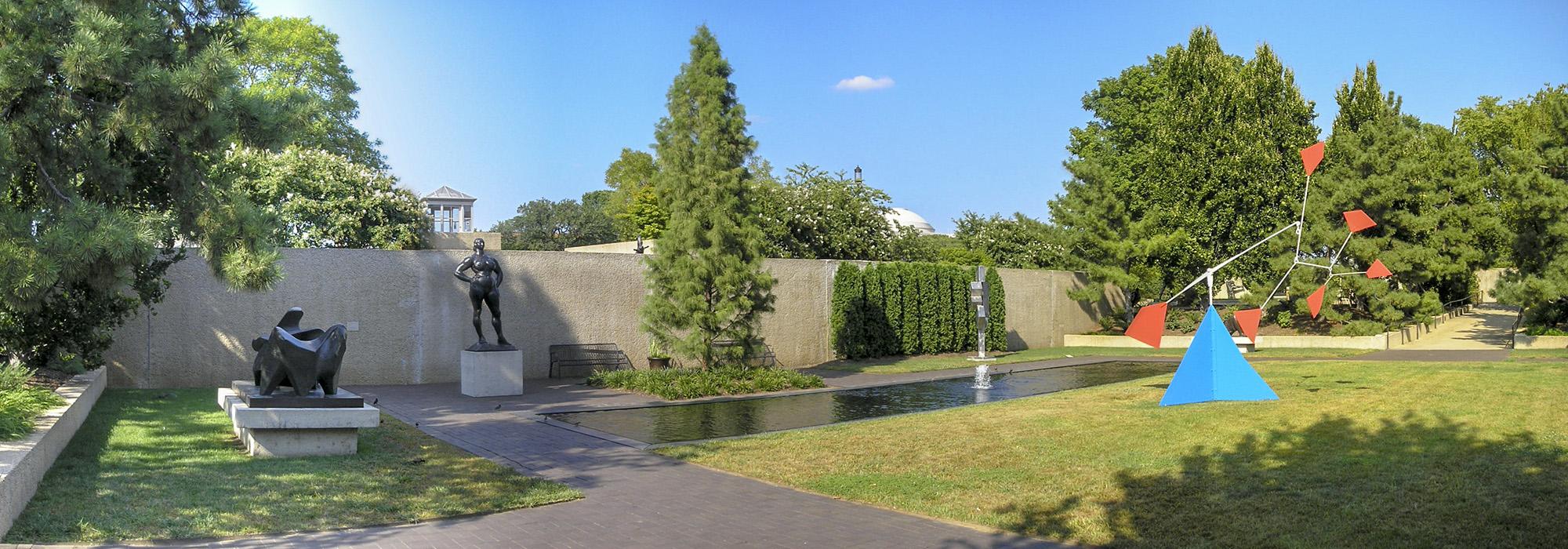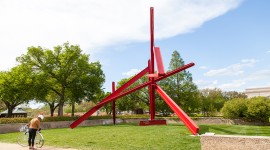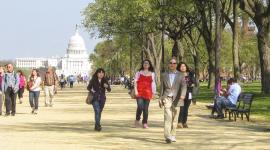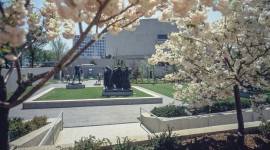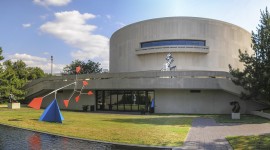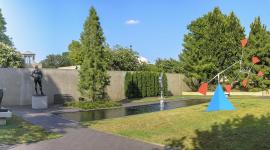But is it Art? Evasive Responses from Hirshhorn Officials about the Sculpture Garden Redesign
The contrast could not have been starker at the October 7, 2020 Section 106 meeting about the proposed redesign of the Hirshhorn Museum’s sculpture garden. An hour and forty-four minutes into the nearly two-hour long online meeting Andrew Lewis, senior historic preservation specialist at the Washington, D.C. Historic Preservation Office (DC HPO), unequivocally stated what The Cultural Landscape Foundation (TCLF) has previously and repeatedly averred: the sculpture garden is “an important work of art” (emphasis added). Oddly, senior Hirshhorn Museum and Sculpture Garden (HMSG) officials queried on the subject could not or would not render an opinion.
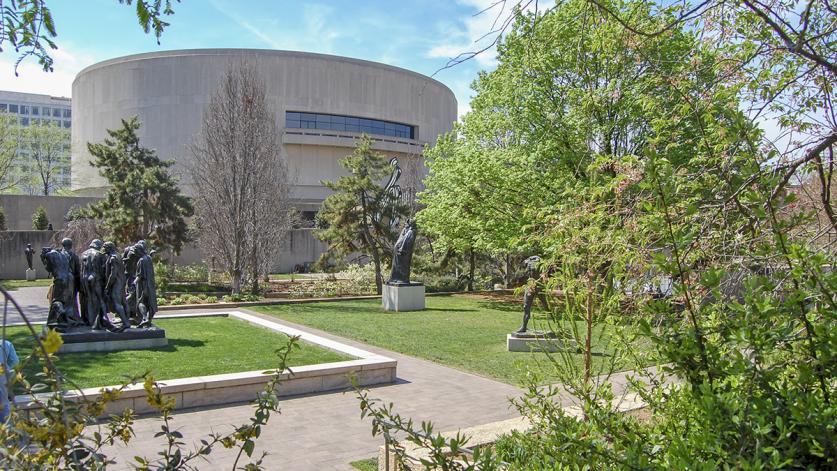
Why does this matter? The HMSG is not a real estate developer agnostic about the cultural, historical and artistic significance of a property they own. Museum officials, curators and art experts are the people whom we rely on to help us understand, contextualize and appreciate art, and to help us develop a value system for culture. We trust them to help guide us. The opinion of Hirshhorn officials about whether the sculpture garden is a work of art is central to their stewardship and decision-making about the sculpture garden's proposed redesign. The Association of Art Museum Directors' professional practices guidelines state: "Member museums must have clear, written collections management policies ... as well as policies that address preservation, conservation, and collection care." The Association of Art Museum Curators' professional practices guidelines state: "The curator has a fundamental role in ensuring that works of art are properly conserved, stored, and exhibited." If HMSG officials do not consider landscape architecture to be an art form and their sculpture garden a work of art, they should explain why. If they do consider it art, then how does that square with the negative impacts of the design decisions they advocate? If they don’t know whether it's art, do they not have a professional and ethical obligation to make that determination before executing a plan that would have ramifications long after they depart the institution?
As TCLF has previously written, the Modernist museum building and sculpture garden are unified through a common minimalist design vocabulary, shared materiality in the use of aggregate concrete, and visual and spatial continuity (for example, the garden’s seminal, character-defining central rectangular pool has a direct relationship with the singular rectangular window that faces out on to the National Mall). The complex, which was designed by architect Gordon Bunshaft and opened in 1974, saw subsequent modifications to the sculpture garden by Lester Collins; the sculpture garden reopened in 1981. On February 18, 2020 the HMSG complex determination of eligibility for listing in the National Register of Historic Places was expanded from 1974 (the year the museum opened) to 1981, to include the Collins overlay.
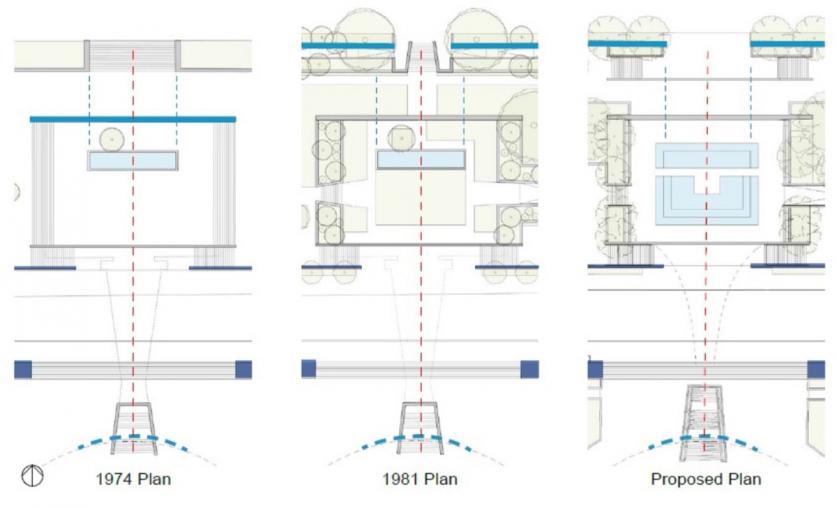
The planned redesign by artist Hiroshi Sugimoto, unveiled in April 2019, would fundamentally alter the original design intent of architect Gordon Bunshaft and landscape architect Lester Collins in two key ways: [a] by introducing a new design element, stacked stone walls (despite Bunshaft's stated preference for aggregate concrete, documented by Smithsonian Secretary S. Dillon Ripley in a memorandum of September 12, 1977), and [b] by radically altering the precisely calibrated rectangular pool area. There were some design modifications unveiled in the February 24, 2020 and May 27, 2020 presentations, but the negative impacts of the stacked stone walls and the radical pool alterations remain.
The purpose of the meetings, held pursuant Section 106 of the National Historic Preservation Act, is to identify negative impacts (“adverse effects” in Federal parlance) that the project would have on a historic property and efforts to avoid, minimize and/or mitigate the adverse effects. "Official consulting parties" to the process including TCLF, Docomomo US and the DC Preservation League (DCPL), all of whom bring subject area expertise, provide guidance, commentary, and advice to help address the adverse effects. Unfortunately, the HMSG and Smithsonian padded the meeting with project cheerleaders (e.g. paid Smithsonian consultants, Board members, and others) who praised the proposed redesign without ever addressing the substance of the gathering – the adverse effects and how to address them. In doing so, HMSG officials succeeded in running out the clock, diluting the intent of the official consulting party process and inhibiting further discussion of the adverse effects within the allotted meeting time (page 4 of the PowerPoint presentation included a partial list of attendees, but when TCLF and DCPL requested a full list of participants, the Smithsonian declined).

There was one notable concession in the October 7, 2020 Section 106 meeting, on page 13 of the PowerPoint presentation, museum officials reclassified the stacked stone walls as an adverse effect based on comments from official consulting parties. Nevertheless, as detailed in the presentation, no effort is being made to avoid this adverse effect.
More importantly, as noted on page 68 of the presentation, the Smithsonian is only interested in getting comments about the proposed minimization and mitigation efforts, and not in avoidance. Consequentially, the reclassification of the stacked stone walls, a bureaucratic rearranging of chairs, is essentially meaningless.
HMSG officials say the stacked stone walls and enlarged pool are necessary to meet future programmatic needs and to accommodate large-scale sculpture and performance art. In responding to a comment from Jill Cooper Udall, with the Ad Hoc Building Committee of the Hirshhorn Board of Trustees, HMSG director Melissa Chiu said: “I think um, what I would say about the stone stacked walls is that um, they’ve, they’ve really allowed us to be able to um, to ah, position the sculpture collection, the sculpture collection we have in a very meaningful way and when we started this process it was really about two things, it was allowing us to highlight more of our collection in a more meaningful way and in an aesthetic way than we have right now. And then it was also allowing us to really um, have contemporary artists respond to the sculpture garden and to the environment. And so, I think that this uh, design that Sugimoto has created for us allows us to do that, so, thank you.”

However, when queried about how the two elements would anticipate performance and other art, HMSG director Melissa Chiu responded without ever addressing the performance art or new works that would be exhibited. Ms. Chiu said the stacked stone walls were a “pre-modern” design that “allowed the modern works [in the museum’s collection] to step forward.” Ms. Chiu continued saying of the Sugimoto design: “So it kinda started with the east gallery and the modern works and then evolved through there and we believe that the stone stacked walls is, is in fact our own kind of 21st century design addition to what is essentially an evolving space that just as our um, our mission is evolving as artists evolve their own voices and the way that they present contemporary art then we are also evolving in response to that.”
Docomomo US executive director Elizabeth Waytkus asked how “the Smithsonian [is] addressing the cumulative adverse impact on the total resource,” and noted: “While the Smithsonian might have agreed to their own changes over time, the consulting parties have continued to say these changes raise significant concerns with the destruction of significant materials, spaces, and setting and the mitigation efforts do not resolve these losses.” Smithsonian Historic Preservation Specialist Carly Bond replied that paperwork associated with process (the final Memorandum of Agreement) could include language reflecting concerns expressed by official consulting parties.
Rebecca Miller, executive director of DCPL, twice tried to get a clear answer about the why the HMSG and Smithsonian were proceeding with the pool alteration, which radically changes the Bunshaft/Collins design and increases the amount of paved surface area. Ms. Bond responded about the ”purpose and need and program” and “opportunities for seating, for sculpture display, for water levels.” Ms. Chiu mentioned “flexibility to present the sculpture and also performances” along with seating and “different levels of the water.”
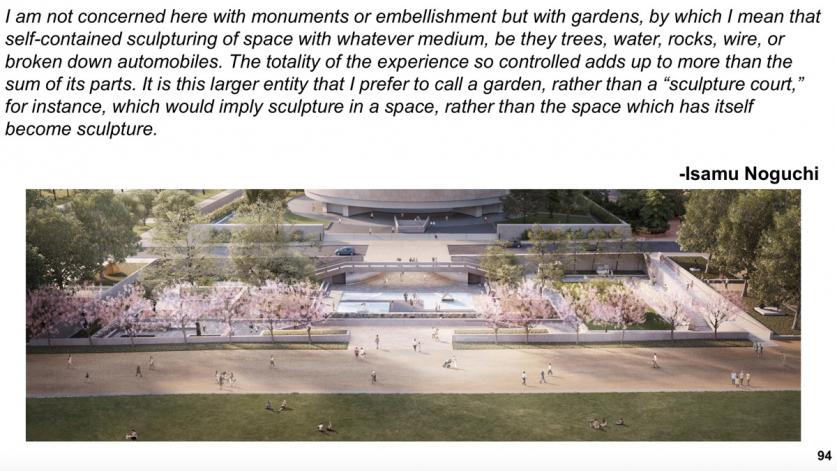
The HMSG complex has been described as the largest work of art in the Smithsonian’s collection; on November 4, 1989, Washington Post architecture critic Ben Forgey dubbed it, “the biggest piece of abstract art in town.” In addition, the Hirshhorn’s website says: ‘Bunshaft conceived the Hirshhorn as “a large piece of functional sculpture”’; Bunshaft, when asked to describe the Hirshhorn, said it was “sculpture”; and the museum’s curator Anne Reeve, in the February 24, 2020 public presentation about the redesign, included a quote by Isamu Noguchi that described sculpture gardens as being works of sculpture (above).
This generated a couple of questions: [a] is the sculpture garden a work of sculpture, and [b] is the museum violating the artist’s intent - the artist being Bunshaft - by introducing the stacked stone walls and altering the pool area? Ms. Chiu dodged the first question and in response to the second provided a non-answer answer that concluded: “I think that um, far from being a violation of Bunshaft’s original ideal this is actually making good on the fact that he wanted to design a museum and sculpture garden that was first and foremost about the presentation of modern and contemporary art. And so, as the garden was evolved by Lester Collins so too Sugimoto’s design is evolving the sculpture garden in keeping with our mission.”
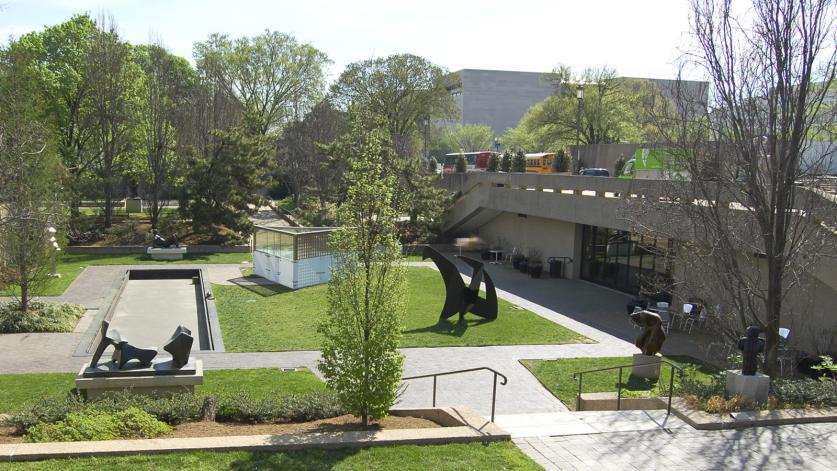
In addressing the question about whether the sculpture garden is a work of sculpture, Ms. Reeve punted, “I think we could go back and forth on nomenclature, you know, for, for, forever.” She also first praised and re-read the Noguchi quote, and then attempted to downplay or discount it by saying, “So as far as I know he never owned that particular phrasing publicly on the record.”
Later in the meeting, when asked if she considered the Hirshhorn’s sculpture garden – a work of landscape architecture – to be a work of art, Ms. Chiu demurred, “So, I … I mean, actually I don’t think it’s about my own opinion on this.” For the record, Ms. Chiu is the leading voice on the redesign effort, the chief advocate repeatedly cited in media interviews and articles, and speaking at public hearings and other venues about this issue for the past eighteen months.
The sculpture garden redesign must still come before the U.S. Commission of Fine Arts and the National Capital Planning Commission, both of which gave concept approval last year (though before the Collins overlay was determined National Register eligible). Nevertheless, despite being told by the Smithsonian's Ms. Bond that the October 7, 2020 presentation was “intended to be a start to a discussion about our proposed minimization and mitigation measures,” HMSG and Smithsonian officials have said we should expect a draft Memorandum of Agreement (MOA), which would document the adverse effects and efforts to address them, by January 2021. It would be helpful to get a determination about whether the sculpture garden is a work of art before then.



